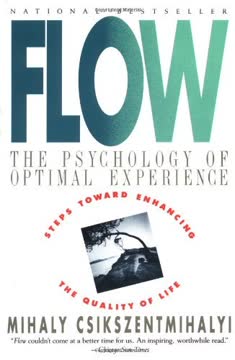Key Takeaways
1. Analyze and solve worry problems systematically
"I keep six honest serving-men (They taught me all I knew): Their names are What and Why and When And How and Where and Who."
Define the problem clearly. Start by writing down exactly what you're worrying about. This helps clarify your thoughts and often reveals that the problem isn't as severe as you imagined.
Gather all relevant facts. Analyze the situation objectively, considering all angles. Ask yourself:
- What is the root cause of the problem?
- What are all possible solutions?
- What is the best solution given the current circumstances?
Make a decision and act on it. Once you've analyzed the problem and considered solutions, make a decision and implement it. Taking action, even if it's not perfect, is often better than remaining paralyzed by worry.
2. Live in "day-tight compartments" to reduce anxiety
"Our main business is not to see what lies dimly at a distance, but to do what lies clearly at hand."
Focus on the present. Concentrate your energy and attention on the tasks and challenges of today, rather than worrying about an uncertain future or ruminating on past mistakes.
Break large tasks into manageable chunks. Instead of becoming overwhelmed by long-term projects or goals, break them down into smaller, daily actions. This makes progress more tangible and reduces anxiety.
Practice mindfulness. Engage fully in your current activities, whether it's work, conversation, or leisure. This helps prevent your mind from wandering to worries about the past or future.
3. Cultivate a positive mental attitude for peace and happiness
"Our life is what our thoughts make it."
Choose your thoughts carefully. Recognize that you have control over your thoughts and can choose to focus on positive, constructive ideas rather than negative, worrying ones.
Practice gratitude. Regularly acknowledge the good things in your life, no matter how small. This helps shift your perspective from what's wrong to what's right.
Surround yourself with positivity. Seek out uplifting books, movies, and people. Limit exposure to negative news and toxic individuals who fuel your worries.
4. Accept the inevitable and cooperate with the unchangeable
"God grant me the serenity to accept the things I cannot change, courage to change the things I can, and wisdom to know the difference."
Identify what you can and cannot control. Many worries stem from trying to change things beyond our influence. Focus your energy on what you can affect.
Practice acceptance. When faced with unchangeable situations, work on accepting them rather than fighting against reality. This doesn't mean you like the situation, but you're not wasting energy resisting it.
Find opportunities in challenges. Look for ways to grow or learn from difficult situations. Ask yourself, "What can I gain from this experience?"
5. Put a "stop-loss" order on your worries
"Remember that no one ever kicks a dead dog."
Set limits on your worry time. Allocate a specific time each day to think about your worries. Outside of that time, postpone worry thoughts and focus on other activities.
Use the "worst-case scenario" technique. Ask yourself what's the worst that could happen, accept it mentally, and then work to improve upon that scenario.
Prioritize your concerns. Not all worries are equally important. Identify which issues truly deserve your attention and let go of trivial concerns.
6. Crowd worry out of your mind through purposeful activity
"Worry is a thin stream of fear trickling through the mind. If encouraged, it cuts a channel into which all other thoughts are drained."
Engage in absorbing activities. Find hobbies or work that fully captures your attention, leaving little room for worrying thoughts.
Exercise regularly. Physical activity is a powerful stress-reducer and mood-booster. It also provides a natural break from mental rumination.
Practice mindfulness and meditation. These techniques help train your mind to focus on the present moment rather than anxious thoughts about the future.
7. Turn liabilities into assets and learn from adversity
"When fate hands us a lemon, let's try to make a lemonade."
Reframe challenges as opportunities. Look for the potential benefits or lessons in difficult situations. How can this experience make you stronger or wiser?
Develop resilience. View setbacks as temporary and specific, rather than permanent and pervasive. Cultivate the belief that you can overcome obstacles.
Learn from failure. Analyze mistakes and failures for valuable insights. What can you do differently next time? How has this experience prepared you for future challenges?
8. Give service to others to find purpose and banish worry
"The best way to forget your own problems is to help someone else solve theirs."
Volunteer or help others. Engaging in acts of service shifts your focus from your own concerns to the needs of others, providing perspective and purpose.
Practice empathy and compassion. Actively listening to and supporting others can reduce your own stress and worry by fostering connection and gratitude.
Share your experiences. If you've overcome worries or challenges, consider mentoring or sharing your story to help others facing similar situations.
9. Use relaxation techniques to combat fatigue and tension
"Rest before you get tired."
Practice progressive muscle relaxation. Systematically tense and relax different muscle groups to release physical tension and promote mental calm.
Use deep breathing exercises. Slow, deliberate breathing can quickly reduce stress and anxiety by activating the body's relaxation response.
Incorporate regular breaks. Take short breaks throughout the day to rest and recharge, preventing the buildup of stress and fatigue.
10. Develop good working habits to prevent worry and increase productivity
"For every minute spent organizing, an hour is earned."
Prioritize tasks. Use techniques like the Eisenhower Matrix to focus on what's truly important and urgent, reducing worry about unfinished work.
Break projects into smaller steps. This makes large tasks less overwhelming and allows for a sense of progress and accomplishment.
Create a structured routine. Having a consistent daily schedule can reduce decision fatigue and provide a sense of control and stability.
11. Count your blessings instead of your troubles
"When I was a boy on the farm in Missouri, I was afraid that I might not get a pair of shoes to wear to the country school in the fall, but I forgot to be grateful that I didn't have to wear shoes during the hot summer."
Practice daily gratitude. Regularly write down or reflect on things you're thankful for, no matter how small. This shifts focus from what's lacking to what's abundant in your life.
Compare wisely. If you must compare your situation to others, consider those who have less rather than those who have more. This can foster appreciation for what you have.
Celebrate small wins. Acknowledge and appreciate your daily accomplishments and positive experiences, building a habit of recognizing the good in your life.
Last updated:
FAQ
What's How to Stop Worrying and Start Living about?
- Focus on Worry Management: The book offers practical techniques to manage and eliminate worry, emphasizing living in the present.
- Personal Stories and Examples: Carnegie shares anecdotes and stories of individuals who have successfully overcome their worries.
- Actionable Advice: It provides specific rules and techniques, such as "Live in 'day-tight compartments'" and "Put a 'stop-loss' order on your worries."
Why should I read How to Stop Worrying and Start Living?
- Practical Solutions: The book offers tested formulas for reducing stress and anxiety, leading to a more peaceful life.
- Timeless Wisdom: Carnegie's insights are based on human psychology, making them relevant across generations.
- Improved Mental Health: Following the book's advice can enhance mental well-being and cultivate a positive outlook.
What are the key takeaways of How to Stop Worrying and Start Living?
- Live in the Present: Focus on today and avoid letting past regrets or future anxieties affect your current state.
- Analyze Worry Problems: Determine the worst possible outcome and prepare to accept it to alleviate anxiety.
- Cultivate a Positive Mental Attitude: Adopt a positive mindset to transform experiences and reduce worry.
What are the best quotes from How to Stop Worrying and Start Living and what do they mean?
- "Our life is what our thoughts make it.": Highlights the influence of mental attitude on happiness and success.
- "Don't cry over spilt milk.": Encourages moving forward and learning from past mistakes rather than dwelling on them.
- "The chief personality characteristic of persons with hypertension is resentment.": Suggests a link between emotional states and physical health.
What is the "magic formula" for solving worry situations in How to Stop Worrying and Start Living?
- Step 1: Analyze the Situation: Assess the worst possible outcome to clarify the situation and reduce worry.
- Step 2: Accept the Worst: Mentally prepare to accept the worst-case scenario, leading to peace and reduced anxiety.
- Step 3: Improve on the Worst: Focus on ways to improve the situation, regaining control and reducing helplessness.
How can I "crowd worry out of my mind" according to How to Stop Worrying and Start Living?
- Stay Busy: Engage in activities that require full attention to prevent dwelling on worries.
- Focus on Constructive Tasks: Concentrate on tasks that require planning and effort to shift away from negative thoughts.
- Use Occupational Therapy: Work can serve as an antidote to worry by keeping the mind occupied.
What's Dale Carnegie's Lifetime Plan for Success about?
- Focus on Personal Development: Emphasizes self-improvement and personal growth through practical advice and stories.
- Seven Rules for Happiness: Outlines rules to cultivate a mental attitude fostering peace and happiness.
- Real-Life Examples: Uses anecdotes to illustrate overcoming challenges and worries.
Why should I read Dale Carnegie's Lifetime Plan for Success?
- Timeless Principles: Offers principles on human relations and personal effectiveness applicable in various life aspects.
- Practical Strategies: Provides actionable strategies to improve communication, reduce anxiety, and foster positivity.
- Inspiration and Motivation: Encourages readers to take charge of their lives and make positive changes.
What are the key takeaways of Dale Carnegie's Lifetime Plan for Success?
- Seven Rules for Peace and Happiness: Includes counting blessings and helping others to cultivate a positive attitude.
- Importance of Helping Others: Focus on others' needs to alleviate personal worries and find happiness.
- Power of Perspective: Adopting a long-term view can help reduce anxiety about immediate problems.
What specific methods does Carnegie suggest for overcoming worry in Dale Carnegie's Lifetime Plan for Success?
- Analyze Your Worries: Write down and analyze worries to understand their root causes.
- Accept the Worst: Mentally accept the worst possible outcome to reduce fear.
- Take Action: Focus on constructive actions to address worries rather than dwelling on negatives.
How does Dale Carnegie's Lifetime Plan for Success address the concept of self-sacrifice?
- Self-Sacrifice for Happiness: Suggests that helping others can alleviate personal worries and enhance well-being.
- Quotes from Experts: Uses insights from figures like Carl Jung to support the argument for self-sacrifice.
- Practical Examples: Shares stories of individuals finding joy and purpose through acts of kindness.
How can I apply the principles from Dale Carnegie's Lifetime Plan for Success in my daily life?
- Daily Reflection: Reflect on thoughts and actions, focusing on gratitude and positive interactions.
- Engage with Others: Actively seek to help others to foster connections and reduce isolation.
- Set Goals: Establish clear goals for personal and professional growth to reduce anxiety and increase motivation.
Review Summary
How to Win Friends and Influence People is widely regarded as a classic self-help book, praised for its timeless advice on social skills and personal development. Readers appreciate Carnegie's practical tips, relatable anecdotes, and emphasis on genuine relationships. While some find the examples dated, many still find the core principles relevant and applicable today. Critics note the book's repetitive nature and lack of empirical evidence. However, most readers consider it a valuable resource for improving communication, leadership, and interpersonal skills.
Similar Books
Download PDF
Download EPUB
.epub digital book format is ideal for reading ebooks on phones, tablets, and e-readers.



















